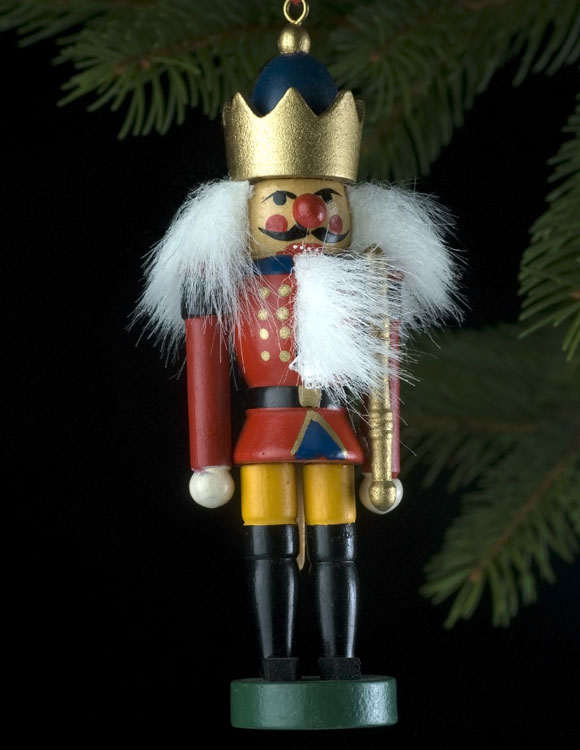Authentic Christmas decorations can be worth a lot more now than when they were made… ©dreamstime.com/Richard Decker
Somewhere near the end of the movie It’s a Wonderful Life, you can hear the jingle of a little bell. Jimmy Stewart’s daughter gazes up at him and says: “Look, Daddy! Teacher says every time a bell rings, an angel gets his wings.”
The bell is hanging, among other baubles, on a tall and sparkly Christmas tree. Considering that movie was made in 1946, the tree’s ornaments—if they still exist—could be worth a fortune.
Fortunately, you don’t need to have been on the set of a 1940s classic to pick up a collectible bauble. Christmas and decorations go together like Santa and his sleigh. And you needn’t celebrate the holiday to make money on it.
A huge variety of Christmas paraphernalia has emerged over the last century. Much of it is eminently collectible now, either holding its value or possibly growing in value as time goes on. You may have items like this waiting in the attic or the basement. If not, you can still pick them up for a steal if you know where to look.
Unspoiled by excess and technology, children of a bygone era were happy to share their nuts and berries, hung on a tree, with hungry birds and squirrels. Today they mostly bemoan the fact that we forgot to buy them batteries. Life was so much simpler then!
The ritual of decorating trees at Christmas began in Germany in the 16th century. And decorating the tree was, and still is, a festive ritual. So take a good look at what you hang on yours. Do you use the same baubles year after year? Are some of them so old that they may be antique—and therefore valuable?
Through the centuries, decorations became more elaborate and inventive. Hand-blown glass was used to shape new characters. Fabric tassels and miniature replicas of animals, toys, and musical instruments decorated the branches. In 1840, England’s Queen Victoria embraced the season of goodwill by sending Christmas cards to her loyal subjects. She honored her German husband, Prince Albert, with the palace’s first tree. Victorian Christmas cards showing religious or winter scenes, reindeer, and robins are collectible from around $8 and up.
German immigrants introduced trees to the U.S. as part of their festivities, and in the 1850s, the first Christmas tree was displayed in the White House. Candles were used to represent the stars in heaven. But once electric lights had been invented, candles were replaced with strings of brightly colored lights (destined to drive us mad when they fail to work…). Today more than 85% of North Americans have at least one tree in their homes, resulting in an upsurge of $30 million into electric companies’ coffers.
The typical bauble-type ornaments originated in a little town called Lauscha, in Germany, in the 1800s. Here, glass manufacturers who produced barometers, ointment bottles, goblets, eyes for stuffed animals, and marbles were surprised by a new demand. People wanted Christmas tree ornaments: sleighs, bells, elves, wise men, polar bears, saints, stars. So great was the demand that competitors in Austria, Hungary, and Czechoslovakia got blowing, with whole families setting up production in factories and foundries.
F.W. Woolworth began importing these baubles in the 1880s. By 1890, he was selling $25 million worth of them. His stores were called Woolworth’s Five and Dime, so you do the math. Some of these ornaments still survive today and can be found at garage sales, flea markets, and online auction sites. A cute, hand-blown Czech glass teddy bear can be found on eBay for $10, and a vintage glass Man-in-the-Moon for $49.99.
Not all Christmas collectibles are bauble-based, however. An antique German “Belsnickel” candy container from the 1930s is on offer at $300. Belsnickel was a folkloric figure, a crotchety, fur-clad gift-bringer from the Rhine, a kind of grumpy second cousin to the better known, more smartly dressed Sankt Nikolaus.
Well-preserved, Christmas-related children’s books and comics always hold their value. You may even have some stashed away from your own or your children’s childhood. The Western Mail Annual from 1950 is on sale at $57. A copy of How the Grinch Stole Christmas, by Dr. Seuss, dated 1957 and in excellent condition, is now worth $2,000.
Or you may like to offer your cookies from an 1887 Queen Victoria Commemorative Biscuit Tin for $225. A 1939 first edition of Hercule Poirot’s Christmas, by Agatha Christie, would cost $159.99, and an antique Dresden pine cone-shaped candy jar from the 1900s, $199. I even found a West German 3.5-inch-long Zeppelin-style airship tree ornament at $22. They don’t make those bad boys any more.
Perhaps because they both favor the color red, Santa Claus and Coca-Cola have always gone well together. Its perennial slogan, “Thirst Knows No Season,” first aired in 1922, just before President Calvin Coolidge thrilled the public with an official lighting-up ceremony of a highly decorated evergreen on the White House grounds, now an annual event.
In 1931, artist and illustrator Haddon Sundblom was commissioned by the Coca-Cola Company to create the jolly, bearded, “human” Santa we recognize today. His ads featured regularly in The Saturday Evening Post, Ladies Home Journal, National Geographic, and The New Yorker. These original, vintage pages, or better still, the whole magazines, are collectible at around $20 and up, depending on condition. Calendars, point-of-sale cards, store displays, snow globes, plush dolls, and posters, all featuring the Claus-Coke combo, are appreciating year on year.
A life-size cardboard cutout of a Santa raising that iconic bottle is on sale on eBay for $59.99—a fun figure to welcome your Christmas guests, perhaps? And what about an 11-inch-tall model of St. Nick, fashioned out of resin and stiffened fabric, enjoying an ice-cold Coke from his own vending machine? Yours for $45.
If you fancy an Old World theme this year, check out Bronner’s Christmas Wonderland in Frankenmuth, Michigan, the world’s largest Christmas store. It has a collectibles department selling everything from vintage German beer steins to classic Hummel figurines. Then gather your friends and family around a tree dripping with antique alternatives and watch their eyes light up. Kitsch it may be, but so is Christmas.



